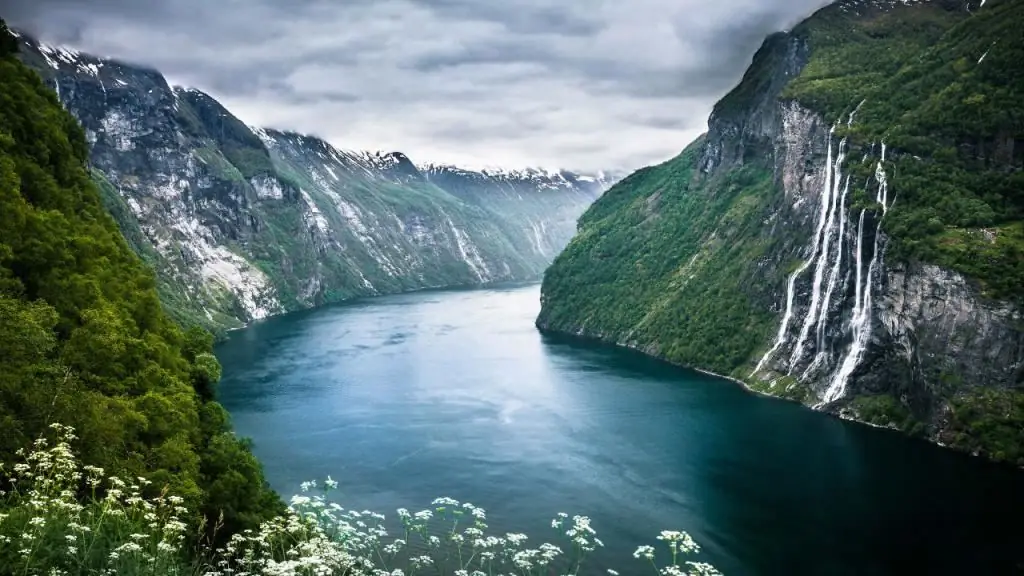- Author Harold Hamphrey [email protected].
- Public 2023-12-17 10:06.
- Last modified 2025-01-24 11:10.
Nukus is a city in Uzbekistan, which is considered the capital of the Karakalpakstan Autonomous Republic. It is also the administrative, economic, scientific and cultural center of Karakalpakstan. You can often hear that Nukus is called the "northern capital" of Uzbekistan.
Description of the city of Nukus
The city of Nukus is located near the Aral Sea. It is located at the epicenter of a continental ecological catastrophe. Deserts surrounded the city from four sides: Kyzylkum ("red sands"), Karakum ("black sands"), Aralkum ("white sands") and rocky desert. It is worth noting that Nukus is located at an altitude of 76 meters above sea level.

The climate in the region is dry, continental with long almost cloudless summers and short snowy winters. The whole city is pierced by the main canal Kyzketken. Also, a large number of highways and railways pass through it.

Like the rest of Uzbekistan, Nukus today has a number of environmental problems that are directly related to dryingAral Sea.
The soil and water are heavily polluted due to the use of pesticides. Dust storms cause sand to rise into the air.
Not so long ago (in 2012) the residents of Nukus celebrated the 80th anniversary of their city. Despite this, its lands have a thousand-year history - more than 1000 archaeological finds have been found in this territory.
History
In Uzbekistan, Nukus was built on the site of the ancient settlement of Shurcha.
The settlement was created in the 4th century BC. e. and lasted until the 4th century AD. e. It is difficult to carry out archaeological excavations at the site of Shurcha today, since now there is a cemetery there. In the 19th century, an aul was erected on the site of the once existing settlement, which was called Nukus.
The first mention of Nukus as a military fortress can be found in the writings of the 12th century. Unfortunately, the building has not survived to this day. Despite the fact that the fortress was restored in 1874, it did not last long - in 1907 it was rebuilt. The remains of the rebuilt structure can be seen in Nukus today.
The modern history of the city cannot be called rich. It is known that a school was built for local residents in 1887, which lasted only two years. At that moment, the main population of Nukus were Karakalpaks, who were mainly engaged in agriculture and cattle breeding.

Later, other nations began to settle in the city.
People of Nukus
Among all of Uzbekistan, Nukus is perhaps the most good-natured people. For 2010 (aftercensus) the number of inhabitants was 271 thousand people. It is worth noting that the city has a fairly large number of large families. The national composition of Nukus is diverse - Russians, Kazakhs, Koreans, Turkmens, Uzbeks and other peoples live here.

Despite the fact that Nukus is considered a fairly developed city, one can often find rounded buildings of the "ancient" type - yurts. Older residents even prefer to wear traditional clothes and hats.
From time immemorial, Nukus has been famous for its craftsmanship in applied art - the Karakalpak pattern cannot be confused with another. It is also worth noting the attitude of the Karakalpaks to the traditions of their ancestors. To this day they tell each other fairy tales and legends, sing lyrical songs. Ancient musical instruments such as dutar, kobuz and nai have also been preserved.
Attractions
The city opens up many interesting places for tourists to visit.

Among the most popular sights of Nukus are the following:
- State. Museum named after I. Savitsky. The museum itself is divided into several rooms. Here the tourist can see many archaeological finds, such as figurines of fire worshipers who lived on the lands of Nukus many millennia ago.
- Dzhanbas-kala. Dzhanbas-kala is an ancient settlement located not far from Nukus. Its main feature is the absence of towers, which were considered a necessary element for settlements.that time. To date, only the walls of Dzhanbas-kala remain, which to this day remind of its former greatness.
- Mizdakhan complex. The archaeological complex of Mizdakhan is in particular demand among religious tourists who come here from all over the world. The complex itself was built in the 4th century BC. e. and consists of several structures and an ancient cemetery.
- Ayaz-kala settlement. This settlement, which was also built in the IV century BC. e., also called the city in the wind. Experts believe that the settlement got its name because it is located in a place with frequent sandy winds.
Airport
Today, Ural Airlines and Uzbekistan Airways regularly operate flights to Moscow from Nukus airport. In 2011, a large-scale reconstruction of the runway was carried out - in just 110 days, an asph alt pavement 3,000 meters long was laid. In addition, air transport parking and aprons were upgraded.

Until 2018, the airport's capacity was 200 people, but after the installation of new terminals, the figure doubled. The airport terminal consists of two sections, which include waiting rooms, checkpoints, and luggage storage.
Development of science, education, medicine and sports
Nukus (Uzbekistan) today has the following establishments:
- 26 secondary vocational schools;
- 5boarding schools;
- 45 comprehensive schools;
- 48 kindergartens;
- 200 sports fields, including gyms, swimming pools, etc.
Also, the city has a branch of the Academy of Sciences of the Republic of Uzbekistan, a large number of institutions, including archaeological, historical, ethnographic, etc.






